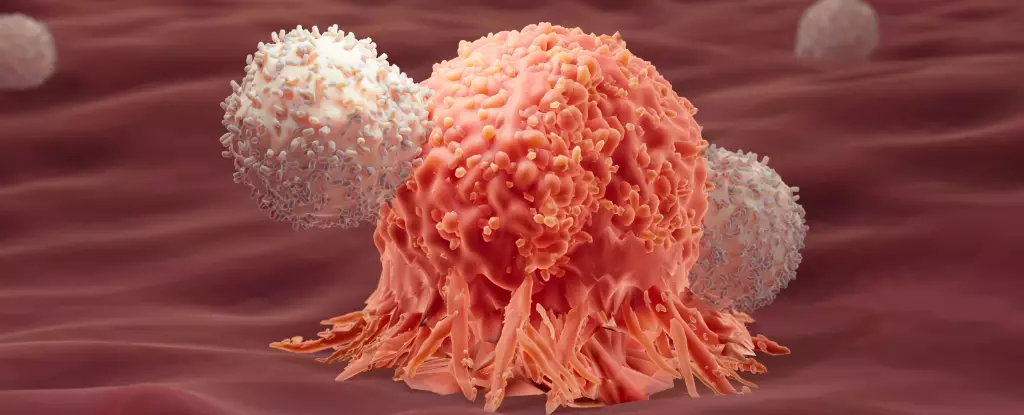Immunotherapy has revolutionized the therapeutic landscape for cancer, offering a beacon of hope for many patients. By augmenting the body’s own immune system to target and destroy malignant cells, researchers are exploring ways to enhance treatment outcomes. However, the success of immunotherapy remains inconsistent, prompting investigations into the underlying reasons for varying patient responses. Recent studies have highlighted the significance of an unusual interplay between different immune responses, suggesting that a balance of these forces might be crucial in achieving long-term remission in cancer patients.
The immune system employs various responses to combat infections and diseases, primarily classified into Type 1 and Type 2 immune responses. Type 1 responses are instrumental in targeting intracellular threats such as viruses and cancer cells. This response is the cornerstone of conventional cancer immunotherapy, particularly in the application of therapies like CAR-T cells, which are engineered T cells meant to enhance this specific immune response against tumors.
Conversely, Type 2 immune responses typically address larger foreign entities, such as parasites. Traditionally, these responses have been perceived as antagonistic to effective cancer treatment as they can inadvertently aid tumor progression. Yet, new findings have emerged that challenge this long-standing notion, pointing to a potential synergistic relationship between these two immune pathways.
In a groundbreaking investigation, researchers from École Polytechnique Fédérale de Lausanne (EPFL) delved into patient data from trials involving CAR-T cell therapy specifically for acute lymphocytic leukemia (ALL). They created a comprehensive genetic map of nearly 700,000 CAR-T cells across diverse patients, focusing on those achieving prolonged remission. Surprisingly, individuals who remained cancer-free for over eight years exhibited markers associated with a Type 2 immune response. This correlation raises intriguing questions about the dynamics of immune activity in combating cancer.
Furthering this exploration, an additional study analyzed the effectiveness of combined Type 1 and Type 2 immune responses in mice. The results were telling: a staggering 86% of mice receiving a combined therapy regimen overcame cancer, while those subjected to a sole Type 1 response did not survive beyond a few weeks. This stark contrast points toward a potential avenue for innovative therapeutic strategies that integrate elements of both immune responses.
Peering deeper into the mechanisms behind these promising findings, scientists discovered that incorporating Type 2 immune components seemed to bolster a crucial metabolic pathway known as glycolysis within the T cells. Glycolysis is essential for cellular energy production, and this enhancement may help T cells avoid exhaustion—a common challenge in cancer treatment. By optimizing their energy metabolism, modified T cells can sustain their anti-tumor activities longer, effectively engaging in an enduring battle against cancer cells.
This exploration of synergy resembles a philosophical view of yin and yang, where opposing forces work in concert to achieve balance and greater efficacy. The application of this metaphor to immune responses opens up new avenues for therapeutic strategies that could fundamentally alter the course of treatment for various cancer types.
The insights gained from these studies are not merely academic; they hold significant potential for reshaping clinical approaches in cancer therapy. By fully understanding the role of both Type 1 and Type 2 immune responses, researchers may pave the way for more effective immunotherapeutic options. This two-pronged approach could particularly benefit patients with solid tumors, which typically demonstrate resistance to traditional immunotherapy.
While the correlation observed in these studies is compelling, it is crucial to stress that correlation does not imply causation. Rigorous clinical trials will be necessary to validate these findings and establish effective protocols that harness both immune responses in humans. The prospect of an enhanced immunotherapy regimen presents a tantalizing goal that could dramatically improve survival rates and foster long-term remission for cancer patients.
The emerging narrative around cancer treatment underscores the importance of revisiting established concepts in immunology. As researchers continue to dissect the intricate workings of the immune system, the prospect of integrating Type 1 and Type 2 immune responses may very well redefine the standards of cancer care. This evolving understanding showcases the dynamic complexity of the immune system, emphasizing that, much like the philosophy of yin and yang, balance may be the ultimate key to unlocking the full potential of immunotherapy in the fight against cancer.


Leave a Reply